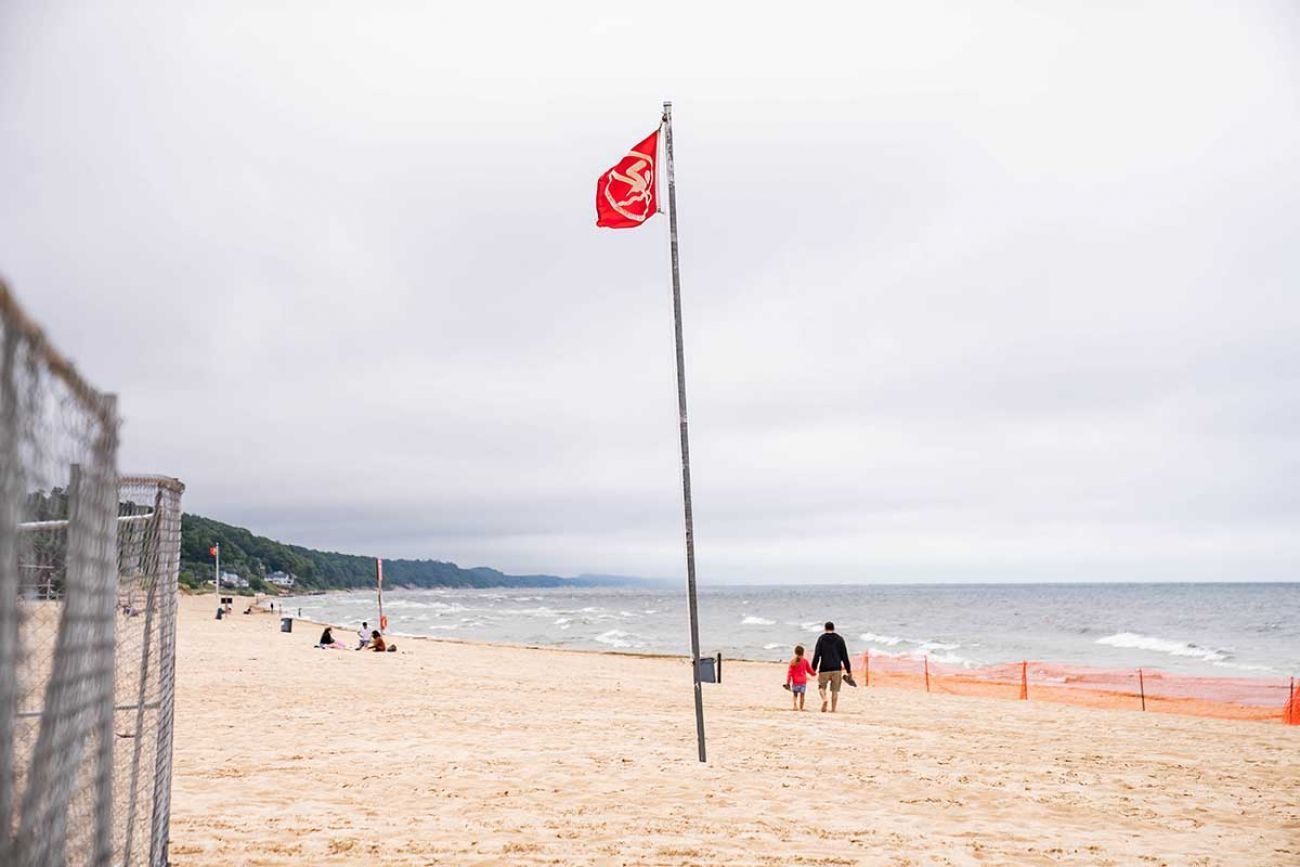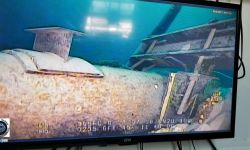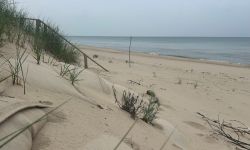Great Lakes water temperatures warming up ahead of Fourth of July weekend

- The Great Lakes are expected to be warmer than normal this year
- Lake Superior usually takes the longest to warm up while Lake Erie warms the fastest
- The Saginaw Bay and parts of Lake Erie have hit the target temperature for comfortable swimming, 70 degrees
Beach season is upon us, and some parts of the Great Lakes are expected to be warm enough for nice swimming ahead of the Fourth of July weekend.
Generally, 70 degrees is considered the minimum for comfortable swimming, and parts of the Saginaw Bay near Bay City and Standish and Lake Erie have crossed that threshold, while temperatures are in the low to mid 60s in Lake Michigan and Lake Huron, according to the National Oceanic and Atmospheric Administration.
Temperatures in Lake Superior are in the low 50s.
Related:
- Free swim lessons part of larger Michigan effort to reduce drownings
- Michigan sounds alarm about mosquitoes after Jamestown Canyon virus detected
- Can climate migrants offset Michigan’s population woes? Maybe, experts say
Water temperatures in the Great Lakes start to warm up around the Fourth of July, and generally hit their peak around Labor Day.
“The way that this year is going so far, it would be a safe bet to say that the water temperatures would probably end up above normal by August,” said Greg Michels meteorologist for the National Weather Service at the Gaylord office.
Lake Superior takes the longest to warm because it is farther north and temperatures closer to Wisconsin are warmer since it’s shallower. The eastern half of the lake is cooler, and can reach 60 degrees at its peak.
“We’ve had people that are out surfing in 40 degree water, but they have thermal wetsuits. Most people, I would say, if the water temperatures are in the 40s … are not generally going to be swimming in that,” Michels said.
Weather conditions play a large role. Lake Superior usually gets 50 percent ice coverage in the winter but this year peak ice coverage reached 20 percent in February.
“We did not have a lot of ice coverage this year,” Michels said. “The winds have also been pretty light as well. When that happens … you don’t end up getting as much mixing of the water so that could end up warming the water up too.”
The other factors that comes into play are sun and rain.
The dry period over the past month helped deter strong winds from bringing the cold water from the deep end of Lake Superior to the surface and warm water on the surface down to the deep end.
Lake Michigan, Huron and Erie have similar temperatures ranging from the upper 60s to lower 70s at their peak. Lake Erie usually warms the fastest.
“Sixty (degrees) is the threshold we use when we start to talk about hypothermia,” said Michael Boguth, meteorologist at the National Weather Service Grand Rapids office. “When wind conditions are more safe to swim in, 60 (degrees) is the cutoff point. “
“Maybe not comfortable for long periods of time but definitely safer,” he added.
The beach forecast also predicts swim and current risk on a low, moderate and high scale. High risk indicates hazardous weather conditions, water contamination, unsafe debris washing ashore, active rescue or recovery efforts.
The Michigan Department of Natural Resources recently enacted a land use order which makes it illegal to enter the water if there is a double flag warning in order to raise awareness about water safety.
The Great Lakes Search and Rescue Project reported that there were 15 drownings in the Great Lakes this year. Last year, there were 108.
A red flag indicates there are hazardous conditions like high surf or strong currents. It's recommended that people stay out of the water. The yellow flag signals that there is medium hazard from moderate surf or currents. Swimming is OK, but people should watch for dangerous currents and high waves. A green flag means that there are low hazards.
While water temperatures don’t play a role in what is considered hazardous conditions, Pat Whalen district supervisor for the parks and recreation division at the DNR confirmed the agency is actively considering if a yellow flag warning be raised depending on water temperatures.
Michigan Environment Watch
Michigan Environment Watch examines how public policy, industry, and other factors interact with the state’s trove of natural resources.
- See full coverage
- Subscribe
- Share tips and questions with Bridge environment reporter Kelly House
Michigan Environment Watch is made possible by generous financial support from:
Our generous Environment Watch underwriters encourage Bridge Michigan readers to also support civic journalism by becoming Bridge members. Please consider joining today.
See what new members are saying about why they donated to Bridge Michigan:
- “In order for this information to be accurate and unbiased it must be underwritten by its readers, not by special interests.” - Larry S.
- “Not many other media sources report on the topics Bridge does.” - Susan B.
- “Your journalism is outstanding and rare these days.” - Mark S.
If you want to ensure the future of nonpartisan, nonprofit Michigan journalism, please become a member today. You, too, will be asked why you donated and maybe we'll feature your quote next time!






